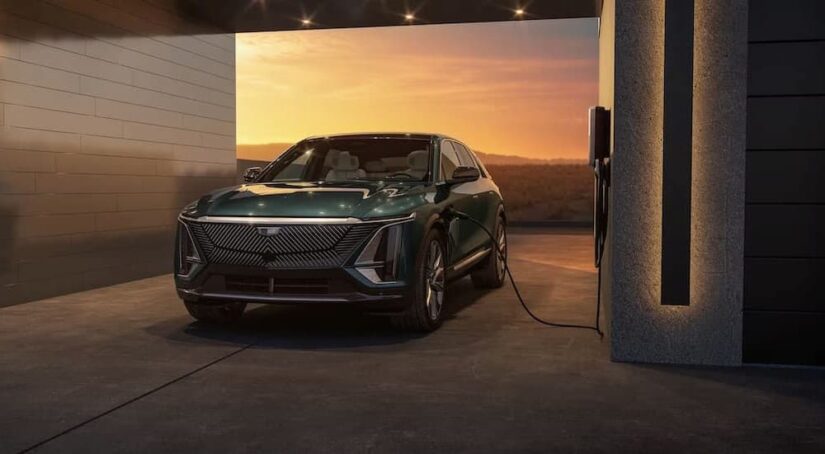Tax credits on electric vehicles (EVs) are just like anything else involved in the American tax code: simple and straightforward, with few changes from year to year. Did you believe any of that? Probably not, and with good reason—the US tax code is incredibly complicated, and as a result, anything related to it also tends to get pretty complicated. EV tax credits have always been a weird thing that is never as simple as they should be, but 2023 has brought some monumental changes to them.
Today, I’m going to take you through the basics of how these tax credits work, what kinds of vehicles qualify for them, and how much of a credit you can potentially take advantage of with one of these models. I’ll do my best to keep things as simple as possible, but please remember that this is a complicated subject, and you should talk to a tax preparer or similarly qualified and certified tax professional to discuss your options and get answers to any questions you might have. Now let’s dive in!
What Is an EV Tax Credit?
Let’s start with the basics, but remember not to get frustrated or feel overwhelmed if some of this stuff seems complicated—like anything related to taxes and the federal government, it is. The most important thing to note is that this is a nonrefundable tax credit available to taxpayers based on when you purchase and, most importantly, take possession of an electrified vehicle. As such, it only affects your federal taxes at the end of the year (so if you buy an EV in 2023 that qualifies, it’ll impact your 2023 taxes that you file in the first part of 2024).
A nonrefundable tax credit means it lowers your tax liability for the year, but you cannot receive any part of the amount as a refund. In other words, let’s say you owe $10k in taxes for 2023, but you qualify for a $7,500 EV tax credit; your owed taxes would be reduced to just $2,500 instead. On the other hand, if tax time rolls around next year and you only owe $3k in taxes for the year while qualifying for a $7,500 credit, it would reduce your tax liability to $0. You wouldn’t owe any taxes for 2023, but you also cannot receive that extra $4,500 as a refund; it’s just gone.
I should also note that you can only claim one EV tax credit per vehicle—so if you buy an EV, sell it to a friend, and then buy it back, you can still only claim the credit once. Also, note that you cannot delay when you use the credit or apply any excess credit to future tax years. You have to use the tax credit when filing taxes for the year you took delivery of the vehicle—the IRS refers to this as when it was “placed in service.” So if you order a Ford Mustang Mach-E this year but you don’t get it until 2024, you’d use any credit you qualify for when filing your 2024 taxes (in 2025), not when filing your 2023 taxes next year.
What Vehicles Qualify for EV Tax Credits in 2023?
New laws and changes to the EV tax credit have gone into effect this year, so be sure any information you look at about qualifying for credit is up-to-date. The biggest aspect of these changes is how they impacted who can qualify and what vehicles can now qualify for these credits. For starters, you have to buy a qualifying vehicle for your own use, not for resale, and you have to use it primarily here in the US. In addition to this, your adjusted gross income (AGI) that you’ll find on your federal income tax form affects whether you can qualify and cannot exceed:
- $300k for married couples filing jointly
- $225k for heads of households
- $150k for all other filers
The IRS allows you to use your AGI from either the year you take delivery of the vehicle or the year before, whichever is lower, so that’s something. In addition to these requirements for your financial situation and how you plan on using the vehicle, the EV has to meet certain standards to qualify for you to take the tax credit on it. It has to have a battery capacity of at least 7 kW hours and a gross vehicle weight rating of less than 14,000 lbs. One of the best things about the changes for 2023 is that used EV models can now qualify for a credit, whereas only new EVs were eligible before. Other requirements to note for both include the following:
New EVs
- Must be made by a qualified manufacturer
- Undergo final assembly in North America
- Meet critical mineral and battery component requirements
- Have an MSRP at or below $80k for vans, SUVs, and trucks; or $55k for other vehicles
Used EVs
- Must be a model year at least two years earlier than year it was purchased
- Have a sale price at or below $25k
- Must be bought from a dealership that reports required information to IRS
There are some other differences if you’re interested in getting the tax credit on a used model; for example, the AGI limits are half the value for new models: so you cannot make more than $150k if married and filing jointly, etc. It’s also very important that you note the third point above—you have to buy a used EV from a dealer that reports information about the sale to the IRS; otherwise, it won’t be accepted for the credit. Ensure any dealership you’re buying from does this so you don’t miss out.
What Are the Potential Tax Credits for 2023?
The amount you can qualify for with an EV tax credit varies based on a number of different factors—just like everything else, it can get a bit complicated. Here’s how it breaks down based on whether you buy a new or used model:
New EVs
- $3,750 if the vehicle meets the critical minerals requirement only
- $3,750 if the vehicle meets the battery components requirement only
- $7,500 if the vehicle meets both requirements
Used EVs
- 30% of the sale price up to a maximum of $4,000
You’re probably wondering about those mineral and battery requirements since I’ve mentioned them twice. These are new rules put in place with the 2023 changes in an effort to push for more EV manufacturing here in the US. To qualify for a 2023 model, 50% of the battery in the vehicle must be assembled or manufactured in North America, and 40% of the critical minerals in that battery must be extracted or processed within the US or a country the US has a free-trade agreement with.
To make matters more complicated, these numbers are set to increase with each passing year until the mineral requirement hits 70% in 2027 and the battery requirement reaches 100% in 2029. You can see why I didn’t get into that earlier because it’s just another layer of complication.
How to Keep Things Simple
Fortunately, the federal government understands just how frustrating and complicated it can make things, so the US Department of Energy and the Environmental Protection Agency has created a site (https://www.fueleconomy.gov/feg/tax2023.shtml) that you can use to easily look up a vehicle that you’re interested in to see what it qualifies for. I strongly recommend using this before purchasing an EV because it can otherwise be very difficult to know just how much of the potential $7,500 credit any make and model offers. The last thing you want to do is assume you can take more than you’re allowed and then get a letter from the IRS saying that you owe them a few thousand bucks. Still, $7,500 is nothing to sneeze at, so it’s worth taking the time to figure things out properly and get the tax credit you deserve.



